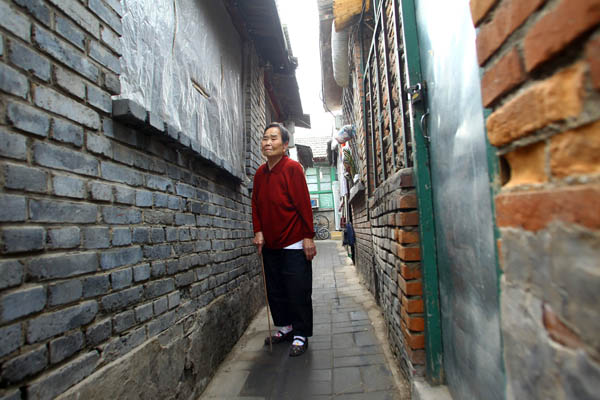Ancient legacy
The water area of Shichahai was called Haizi before the Yuan Dynasty (1279-1368). With the nearby Beihai Lake becoming an imperial back garden, around 20 temples were built in the area of Shichahai.
In its heyday, Shichahai, which is composed of three lakes, Qianhai, Houhai and Xihai, formed the northern part of the water system of the Grand Canal, which connected Beijing with other cities of China. Wooden boats carried goods from southern China into the imperial capital, making the area a busy commercial center.
 |
| An elderly woman at the narrow Baimixiejie Hutong. |
The location near the Forbidden City has long attracted many senior officials and celebrities to the area. As a rare waterfront in the capital, it has been a sanctuary for local residents from the daily hustle and bustle for centuries.
However, the downtown area has declined. Today, the aging community is troubled with heavy traffic jams, a jumble of stores and a polluted environment worsened by tourists and an increasing number of residents.
"The heart of the plan is to preserve the area," says Wu Chen, chief architect in charge of the plan.
"When people think of Shichahai, the lakes and bar street come into mind first, which are tranquil and very Beijing. But when you actually go there, you feel annoyed by the congestion," he says after many visits to the area.
"The central axis of Beijing is expected to be included in the Tentative List of UNESCO World Heritage Sites of China, and as the extension of the central axis, Shichahai should regain its glory," he says.
He admits that the project is complicated and takes time because of the density of the population in the area.
We recommend
